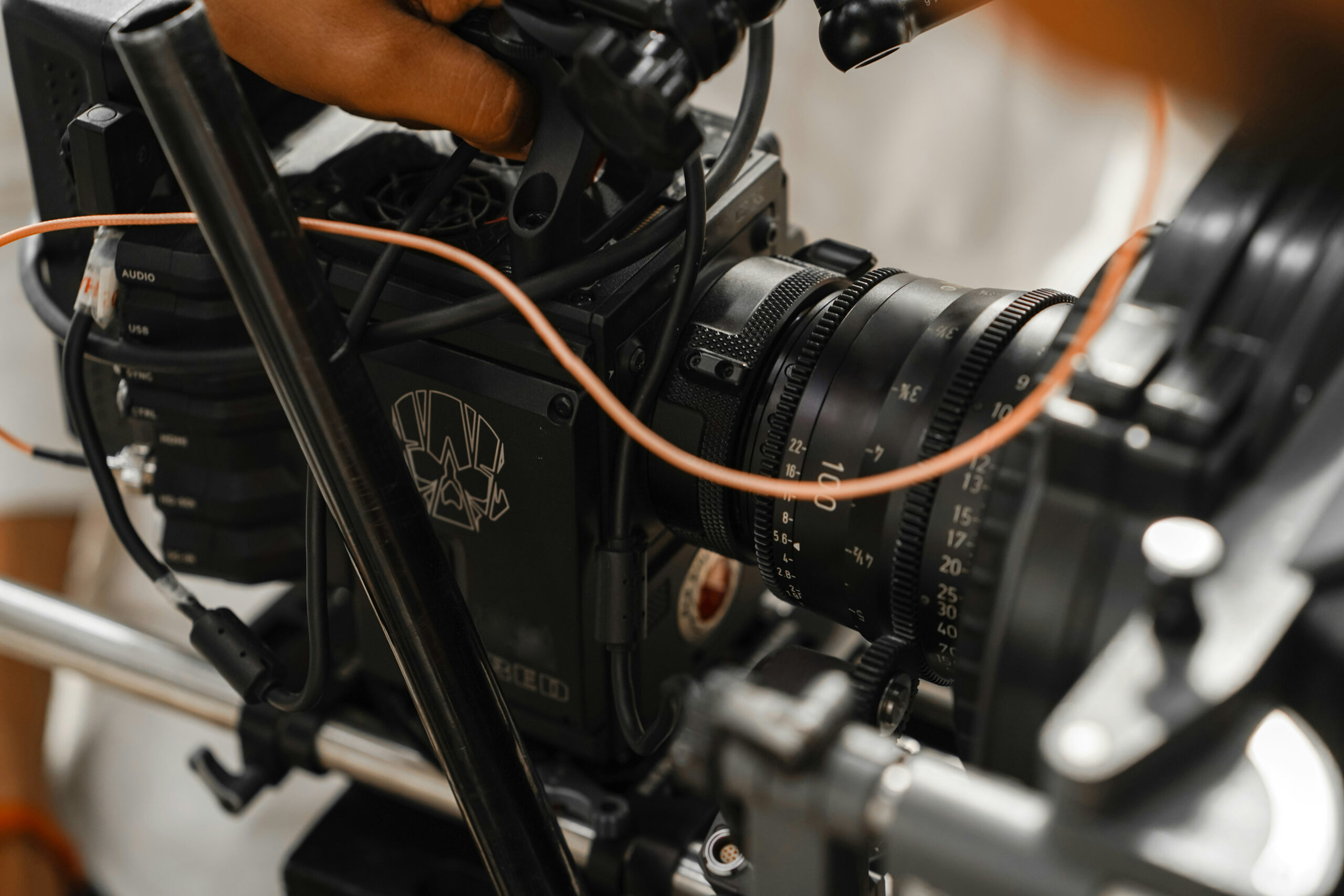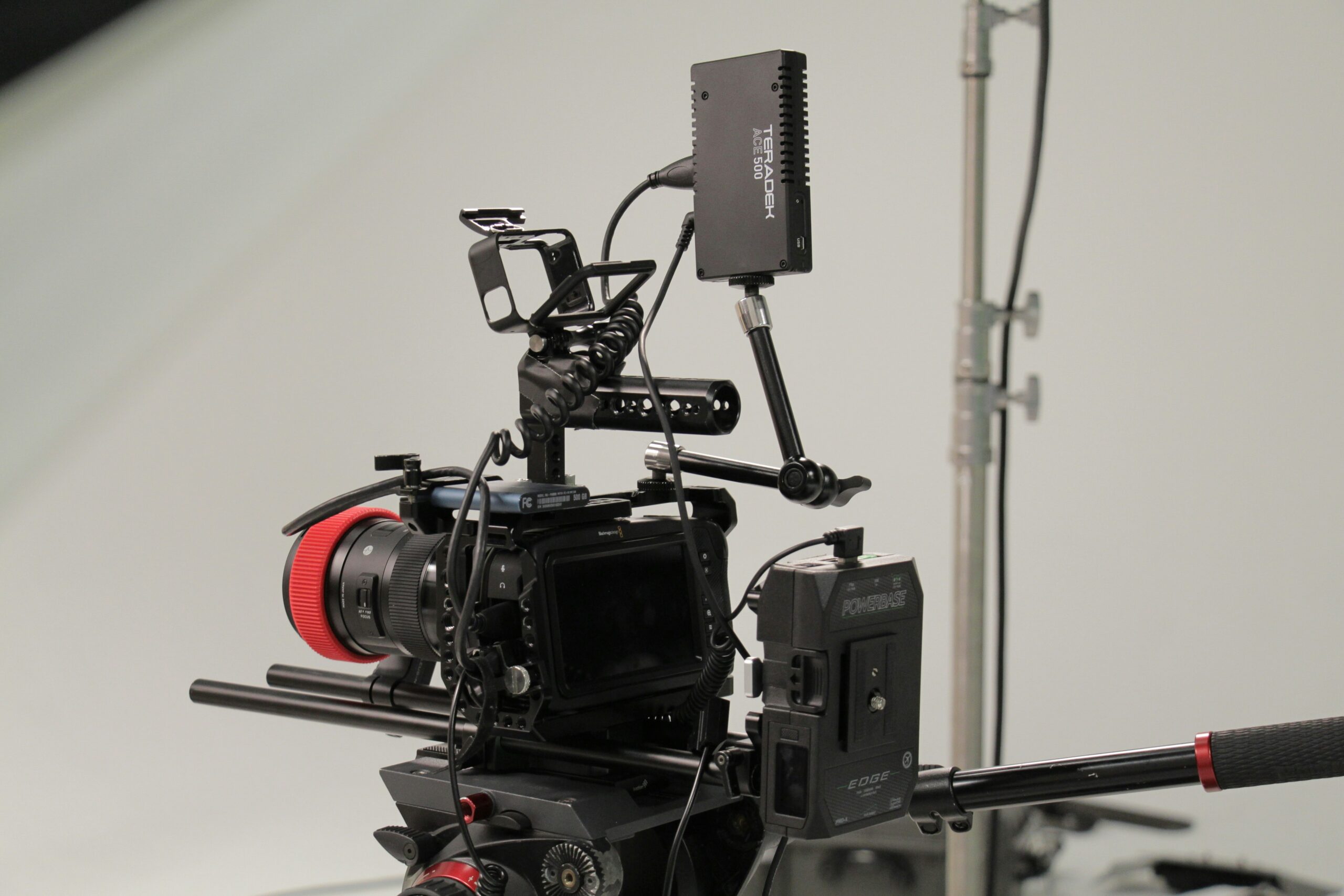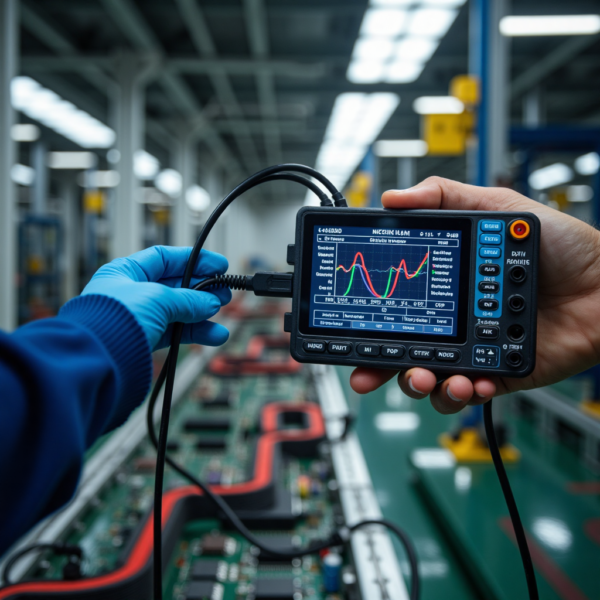Photographic slides for trip-proof cable management
Let’s delve into cable management for dolly shots, with the core goals being preventing trip hazards, protecting equipment, and ensuring smooth movement.
While seemingly a detail, mishandling it can lead to anything from reshoots due to technical failure to damaged gear or even injuries.

Table of contents
Core Challenges:
Mobility: The camera/gimbal on the dolly needs to move smoothly. Cables must move with it without hindering or pulling on the equipment.
Multiple Cables: Common cables include: Camera power, Camera video/power (e.g., BNC/SDI), Monitor power/video, Follow focus control, Video transmitter (Tx), Microphone cables.
Trip Hazard: Cables lying loose on the floor pose a significant safety risk to crew (dolly grip, camera operator, assistants).
Equipment Damage Risk: Cables getting snagged or run over by dolly wheels can damage ports, break cables, or even pull down expensive cameras/accessories.
Restricted Movement & Jerkiness: Tangled or poorly secured cables can limit the dolly’s effective travel distance or cause stuttering/jerky motion during the move.

Systematic Solutions:
Effective cable management is a system, requiring planning from source to destination:
1. Source Reduction & Planning:
Device Integration: Mount power-hungry devices (monitors, follow focus units, video transmitters) directly onto the dolly head or camera cage whenever possible. Reduce the number of separate devices needing their own cable runs. Using a V-mount battery plate with multiple outputs drastically reduces power cables.
Wireless Solutions: Evaluate which signals can go wireless. High-quality wireless video transmitters, wireless follow focus systems, and wireless microphones can significantly reduce cable count. This is the most thorough trip-prevention strategy. While it adds cost, the gains in safety and efficiency are substantial.
Optimal Cable Length: Cables should be neither too long nor too short. Too long = tangles and dragging; too short = restricts movement or strains ports. Calculate the exact length needed based on dolly track length and device positions, adding a safety margin.
2. Equipment-End Management (Camera/Gimbal):
Cable Ties/Velcro Straps: Use reusable cable ties or hook-and-loop (Velcro) straps on the camera cage, gimbal, or dolly platform to bundle multiple cables together. Keep things tidy and prevent loose ends.
Cable Clips/Strain Relief: Install small plastic cable clips or Velcro cable loops on the cage or gimbal to secure cables along a defined path, preventing them from dangling or swaying.
“Service Loop”: Create a small loop of cable (a service loop) near the camera’s ports using a zip-tie or Velcro. This provides strain relief at the connection point, preventing direct pulls on the port.
Cable Path Planning: Define the initial direction cables leave the equipment – typically backwards or sideways-backwards (away from the dolly’s movement path and common operator positions).

3. Dolly Path Management:
Dolly Cable Management Systems: This is the most critical trip-prevention tool!
Dedicated Cable Bridges/Conduits: Many professional dollies (e.g., PeeWee, Cinevate) or third-party accessories offer plastic or metal cable bridges/conduits that attach to the side of the track. Cables are contained within the bridge, completely off the ground, moving with the dolly cart. This virtually eliminates trip hazards and protects cables from wheels. Highly recommended.
Velcro Track: Some dollies have a full-length Velcro loop strip. Attach hook-backed Velcro straps to the dolly cart, bundle the cables, and stick them to the track. Less secure than bridges but more affordable.
DIY Solutions: Use zip-ties or clips to secure a length of flexible plastic conduit (e.g., corrugated tubing) or sturdy fabric cable sleeve to the track side. Route cables through it. Cost-effective, reasonably effective.
Synchronized Movement: The core principle is to have cables bundled, organized, and moving in sync with the dolly cart, not dragging or splaying out on the ground.

4. Ground Segment Management (From Dolly End to Power/Recorder):
Overhead Routing: If possible, use C-stands, light stands, or grip arms with cable sleeves/snake tubes to route cables overhead to the power source or recorder, completely avoiding the floor. This is the safest method.
Ground Securing:
- High-Quality Tape: Use professional gaffer tape (cloth tape) to firmly secure cables to the floor, running them along walls, under tables, or in low-traffic areas. Avoid regular duct tape or painter’s tape – poor adhesion and messy residue.
- Cable Ramps/Covers: In unavoidable walkways, use rubber or plastic cable ramps/protectors to cover and secure cables to the floor. This effectively prevents tripping and protects cables from being crushed. Essential for power cables.
- Cable Channels/Floor Trays: For fixed setups (e.g., studios), install floor-mounted cable channels or use mats with built-in channels to hide cables.
- Cable Sleeves/Snake Tubes: Run multiple cables through a single flexible plastic cable sleeve or snake tube, then secure it overhead or on the ground. Protects cables and looks tidy.
- Slack Loops: At both the end of the dolly track and the power/recorder end, leave sufficient slack loops. Lay these loops flat on the ground and tape them down in a fixed shape (e.g., figure-eight or oval). This ensures the dolly cart can move to its extremes without cables going taut and pulling on equipment. Absolutely avoid hanging loops or loose coils on the floor – they are trip hazards!

5. Power-End Management:
Centralized Power: Use high-capacity V-mount batteries or power banks with distribution plates to power multiple devices, minimizing AC power cables.
Secure Batteries/Power: Place batteries, AC adapters, and power banks in safe, stable, out-of-the-way locations (e.g., inside a gear backpack, on a case, on a dedicated battery mount) and secure them with Velcro or straps.
Excess Cable Coiling: Coil any excess power cable neatly, secure it with Velcro, and place it safely to avoid clutter.

Trip Prevention & Safety Protocols:
Crew Awareness: Everyone on set (camera op, assistants, dolly grip, talent) must be aware of cable locations and paths. Cultivate the habit of high-stepping.
Clear Communication: Verbally announce any cable path changes or equipment moves to the crew before doing it.
Marking Cables: In low-light conditions, use glow tape, illuminated cable wraps, or small LED lights to mark critical cable paths.
Regular Checks: During breaks, check cable security, signs of wear, and slack loop effectiveness.
Emergency Plan: If someone trips, prioritize human safety first, then equipment. Know how to quickly disconnect critical links (e.g., power).
Summary:
The core of trip-proof cable management for dolly shots lies in “Bundle & Contain, Move in Sync, Off the Floor First, Secure Down Tight.”
Investing in the right tools (dolly cable bridges, gaffer tape, cable ramps, sleeves) and developing good habits (reduce, bundle, secure, leave slack) significantly enhances shooting safety, smoothness, and professionalism.
Remember, one poorly managed cable can be the trigger for an expensive accident. Treat cables like a “dance partner” that needs careful choreography within your workflow, not an inconvenient “tripping hazard.”
No comments to show.




Leave a Comment